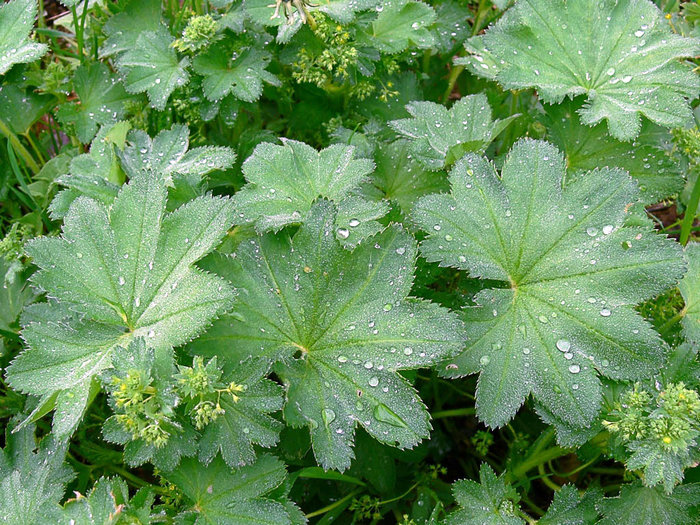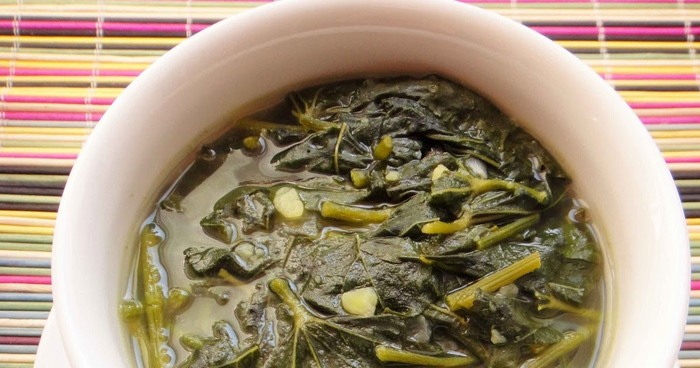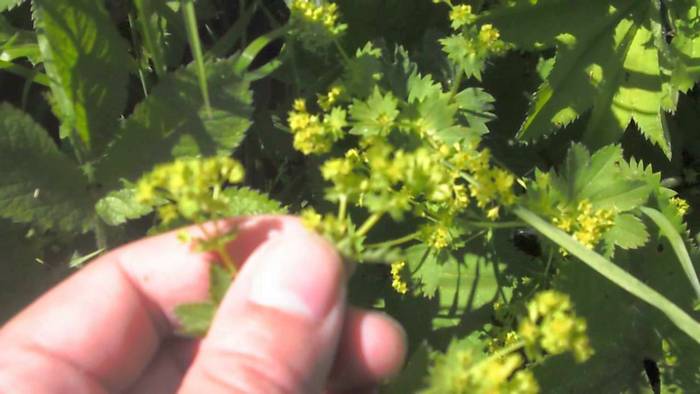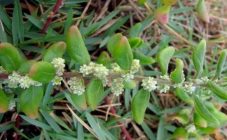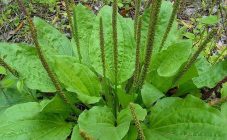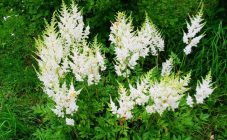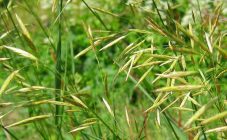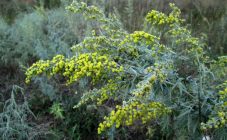Content:
The cuff herb is a plant with unique decorative properties. It can become not only a decoration for a home garden, but also a panacea for many diseases.
Description of the herb
The cuff grows mainly in forests or meadows. The grass is distinguished by its peculiar foliage shape, resembling cuffs. It is because of them that it got its name. But in the popular environment it is called "heavenly dew", because the leaves of the cuff are hung with dew drops, iridescent and sparkling in the sun.
The cuff has long won the attention of people; even in ancient times, alchemists used it to carry out magical rituals, attributing to it the presence of unusual powers. The purpose of such rituals was to obtain the elixir of life and eternal youth.
The herb may not have magical powers, but there is a healing effect, which is why it is in the lead in the list of medicinal herbs to this day.
Varieties
Currently, about 40 different varieties of cuff have been discovered, but this figure is inaccurate, because botanists are still working with this crop. This is due to the fact that the varieties have almost no differences, and their properties are generally similar to each other.
Identified and studied varieties:
- soft, characterized by small greenish-yellow flowers;
- alpine, the main feature of which are lobed leaves of dark green shades and small yellow flowers;
- Siberian, growing exclusively in meadows in an unfavorable climate, as a result of which it has a powerful stem and a developed root system;
- ordinary, can be found in the forest, on the banks of rivers and lakes, is distinguished by its unpretentiousness and adaptability to environmental conditions.
The most applicable cuff is ordinary, which has unique healing properties.
In addition, a soft, loose soil that is rich in natural fertilizers is needed for optimal cuff germination.
Plant propagation is carried out in several ways:
- By dividing the bush. It is produced from an overgrown bush, the daughter processes of which are transplanted into a previously prepared open ground.
- Growing seeds. Such reproduction is most suitable when you need to get a large amount of the finished product. For example, if there is a goal of further implementation through sale. Planting is carried out at the end of autumn in a container containing moist, humus-rich soil. Seedlings develop in cups until spring, after which they are transferred to open ground.
- By cuttings. With this method, the cuttings first go through a two-week stage, growing in containers at home, after which they move to a permanent place in the garden area.
Culture properties
The cuff has found application in many areas of human life, but it occupies a special place in:
- cooking;
- cosmetology;
- medicine.
The pipert herb, as it is called in the Armenian dialect, is the basis of many dishes. It can be used as a seasoning for salad, soup and even cutlets. Taste qualities are due to the content of ascorbic acid, which has a sugar sweetish taste.As a rule, dishes are based on the use of fresh and young leaves, because mature ones carry an unpleasant bitter aftertaste.
This is due to the fact that the herb contains a large amount of antioxidants in combination with vitamins, which trigger the production of collagen in the body, which is responsible for age-related skin changes.
But the herb cuff found the greatest application in folk medicine. This is due to the fact that the composition includes a large number of beneficial nutrients and minerals:
- steroids or phytosterols, which are responsible for removing toxins from the body, as well as normalizing hormonal levels;
- ascorbic acid, which increases the immunity of the human body, stimulates blood circulation and normalizes the functioning of the central nervous system;
- phenolcarboxylic acids, which accelerate the process of bile excretion;
- lingin, which has strong antimicrobial and anti-inflammatory properties, fights staphylococcus, salmonella and some types of fungus;
- flavonoids that help in the formation of cartilage tissue;
- coumarins, which are responsible for speeding up the wound healing process;
- fatty acids that normalize metabolism.
This composition of the herb determines the main directions of use, aimed at combating the following diseases:
- ulcerative formations in the gastrointestinal tract;
- colitis and enterocolitis of varying severity;
- helps treat diseases that cause diarrhea;
- inflammatory processes in the liver;
- diseases in the field of gynecology and urology, especially will help get rid of painful and heavy menstrual bleeding;
- treatment of varicose veins;
- has the ability to fight autoimmune pathologies and diseases of the connective tissues.
Thus, the contribution of the cuff to traditional medicine is enormous, but at the same time there are a number of caveats. The main contraindication: prohibited for use by people with allergies or individual intolerance. If the patient is not sure if he has a negative reaction to the herb, it is better to do the test by applying a couple of drops of the juice to the skin of the wrist. If sensations unfamiliar to the body appear, for example, tingling or tingling sensations, the infusion should not be used under any circumstances.
Diseases and pests, ways to combat them
Since the cuff has a number of unique properties, many gardeners decide to grow it in their homesteads. But even with the right soil, fertilizers and groundbaits, proper care, diseases can occur leading to the death of the plant. These diseases are often caused by parasites.
The main diseases and how to deal with them:
- Mold formation caused by, as a rule, incorrect and excessively abundant watering, which is the basis for the growth of fungi. Any antifungal agent will help fight them.
- Septoriasis - a disease that causes the formation of spots on the surface of the leaf. The affected foliage should be removed and burned, and the plant should be treated with a disinfectant solution.
- Mosaic in the form of rings. It is quite simple to recognize it, because mosaic stripes form on the surface. The way to fight is the same as with the previous illness.
In addition to diseases, there are a number of insects that interfere with the normal growth and functioning of the grass. These include:
- Aphid. It is distinguished by its rapid reproduction, as a result of which it quickly spreads throughout the garden and causes great damage to the garden as a whole. The insect dehydrates the plant, as a result of which it weakens and dies. Chemical antiparasitic drugs, for example, spark or confidor, will help as a remedy for getting rid of.
- Spider mite lives, as a rule, on the leaf on the back side. Its appearance is caused by the increased ambient temperature. As with aphids, a strong antiparasitic agent will help.
Features of collection and procurement
Pipert grass (in Russian - cuff) blooms from June to September. It is during this period of time that you need to collect. It is better to harvest the plant during the daytime when there are no dew drops on the leaves.
For further use, the part located above the surface of the earth is useful, that is, the stem, leaves and flowers. All this is carefully cut off at the base and sent to dry in an open air.
Dried herb tastes slightly different from fresh. If the young has a pleasant sweetish tint, then over time it acquires astringency and bitterness.
The cuff herb is unique in its medicinal properties, so it is not for nothing that it has gained a leading place among connoisseurs of traditional medicine around the world. It is important to use it correctly, not exceeding the optimal allowable portions, and also to follow the rules of storage and collection. Only then can the cuff transfer all the benefits to the body.
